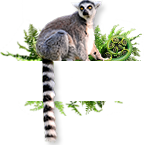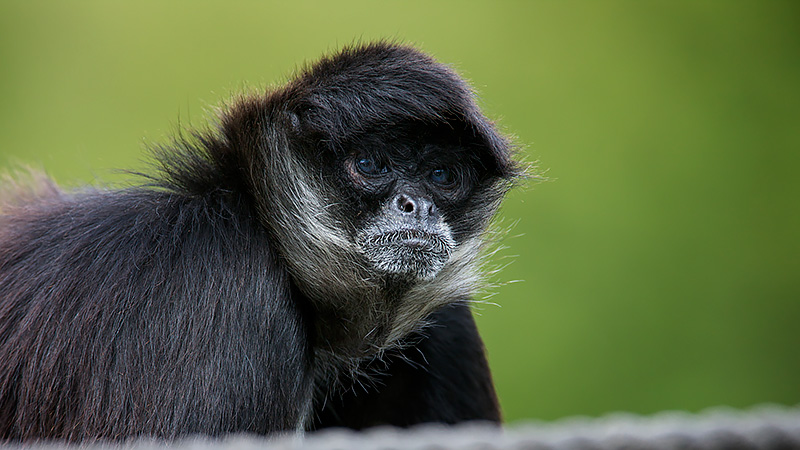
What's New
4 August 2023
“Bonjour“ to suka, Orana‘s new male siamang
Orana Wildlife Park is excited to announce the arrival of Suka, a 9-year-old siamang gibbon, from Pairi Daiza Zoo in Belgium. Suka has completed quarantine and being introduced to the Park’s 10-year-old female, Basuki who is very excited with her Belgian beau!
Exotic Species Manager Rachael Mason says: “Suka’s transfer is really important for conservation efforts for these incredible apes because he is a new founder animal for the Australasian region, introducing new genetics.” His transfer to Aotearoa was a joint recommendation from species co-ordinators at both the Zoo Aquarium Association Australasia and the European Association of Zoos & Aquaria’s as part of the managed conservation programme for these stunning simians.
Rachael adds that: “Suka, meaning ‘adored’, is a very sweet natured animal, a gentle boy who has been playfully interacting with his keepers, before being introduced to Basuki. Basuki has turned into quite a flirt and made it her mission to woo her new suiter. Both siamangs have a very similar playful nature and since being introduced always spend time together. The zoo team is very hopeful of them producing baby siamangs in the future. Basuki herself was the last siamang born at Orana in 2013.”
As part of the transfer of Suka, our beloved elderly siamang Peggy was transferred to Hamilton Zoo to be a companion for her elderly father Itam and has settled in nicely there. Peggy was the first female siamang to arrive at Orana (in 2005). “Peggy was a very sweet natured animal and produced three youngsters whilst here. Our team miss her but are delighted to welcome Suka”.
Siamangs are known as lesser apes and are arboreal inhabitants of Malaysia and Indonesia. Their distinguishing feature is a large throat sac that they use to make socially important vocalisations or songs. “We have been thrilled to hear Suka and Basuki singing together,” concludes Rachael.
Orana is privileged to be part of the managed regional breeding programme for this endangered species. Siamang gibbon populations are sadly decreasing due to their habitat being destroyed for oil palm plantations, they are also one of the most heavily traded gibbon species for the illegal pet trade.
2 February 2023
Orana staff mourn the loss
of elderly llama, Roldo
Orana Wildlife Park’s veterinary and animal management team made the agonising decision to euthanase our elderly llama, Roldo, yesterday due to age related illness. Sadly, Roldo’s condition deteriorated rapidly over the past few days.
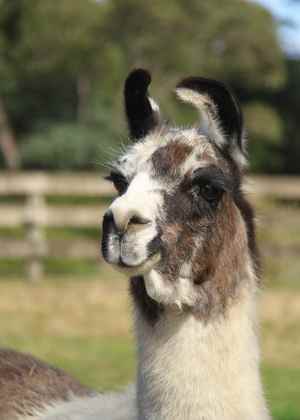
Roldo has been a much-loved member of our animal family, especially in the farmyard, since he arrived more than 23 years ago. He has been an incredible ambassador for the Park due to his fantastic temperament. Thousands of children have patted and brushed him and had the chance to meet him during Zoo School programmes. In his younger years, some of our wonderful volunteers would walk him around the Park daily to meet visitors; he’s said hello to people on our safari shuttle, delighted visitors waiting in the queue to enter the Park and visited staff in the office. Some members of our team recall meeting Roldo when they visited Orana as a child and have been delighted to have the chance to work with him.
Orana’s CEO Lynn Anderson recalls purchasing Roldo at a Rare Breeds Auction in 1999: “He was so well lead trained and friendly that I thought he would be a hit with Park visitors. I actually missed out on him, as the bidding went too high, so I bought another llama that was lead trained, but not as friendly. When the people who bought Roldo discovered he would be for Orana, they agreed to do a swap, as they only wanted him for breeding and they thought the llama I had bought would be just as good for their needs. I was told on the auction day that he was five years old, so he could potentially be one of the oldest llamas in the world (the current record holder is 27 years old and verified by Guinness World Records). I will miss Roldo and he will always hold a special place in my heart”, concludes Lynn.
Roldo will be greatly missed by our team, who considered it a privilege to work with such a beautiful and amazing animal.
10 January 2023
Delightful giraffe calf takes big strides
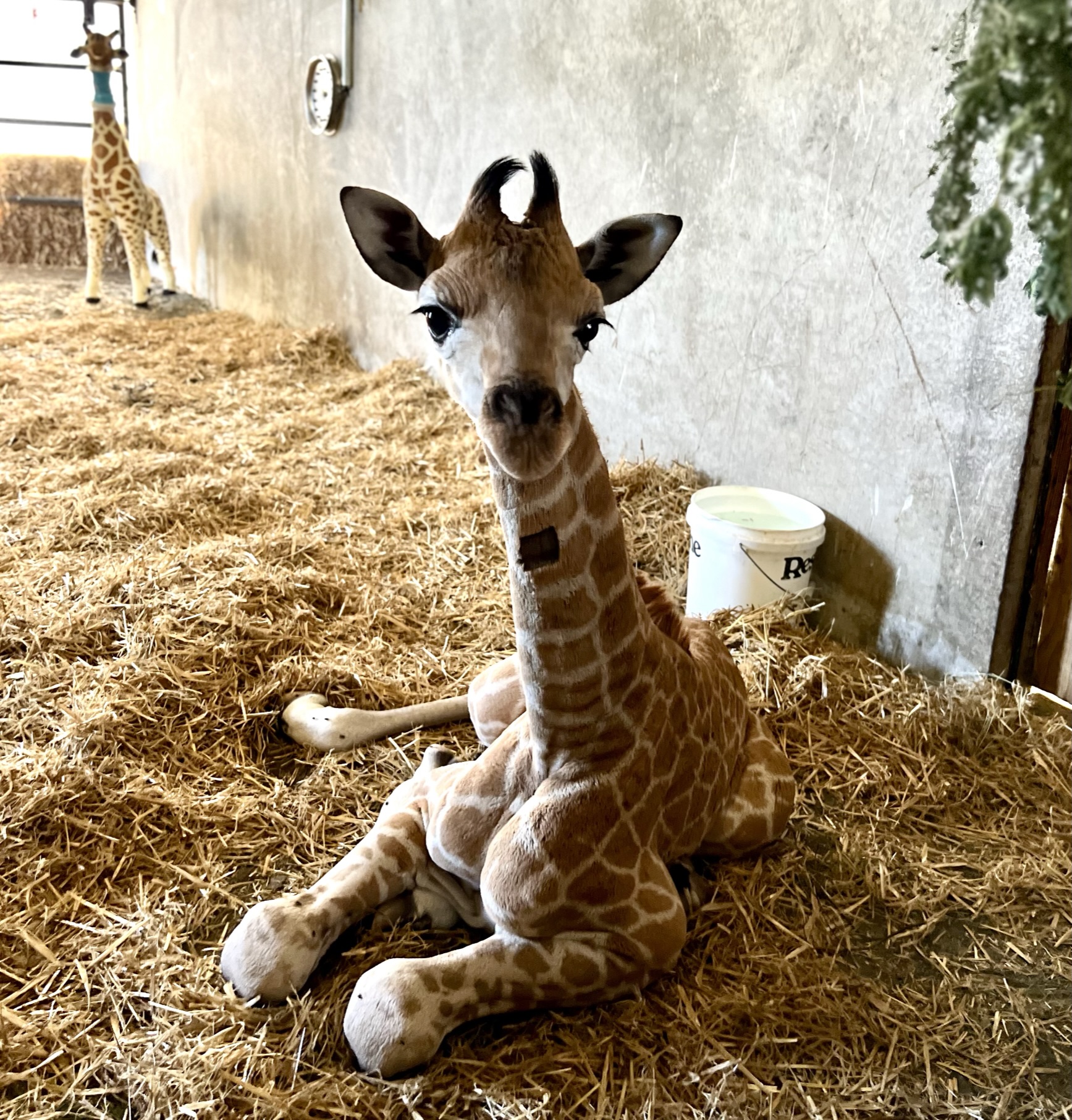
Orana Wildlife Park is excited to announce that a beautiful three-week-old male giraffe calf took his first steps into our giraffe habitat on Tuesday, 10 January. The yet-to-be-named calf is being assist-fed by our dedicated animal keepers.
Orana’s Acting Exotic Species Assistant Manager, Stewart Taylor, explains: “the healthy calf was born just before Christmas to first time mother Kamili. Unfortunately, Kamili would not allow the calf to feed, so in consultation with our vet team we made the decision to transfer the youngster to Rangiora Vet Centre to establish a bottle-feeding regime in their 24-hour care clinic. This also meant he could be closely monitored during the early stages to provide him with the best possible start to life. Our team spent the evenings with him at the clinic to establish a bond as well as assist Rangiora Vet Centre staff with his care.”
“We are thrilled with his progress. He returned to Orana just over a week ago. He is feeding well, guzzling 6 litres per day, and has already grown to be over 6 foot tall so he stands higher than most of our team.”
“The calf is housed alongside the rest of our herd, including Kamili, and he has ventured to the outside yard over the past few days. Tomorrow he will have the opportunity to join the herd in our large display and this is a significant milestone for him and the team. I am sure our visitors will delight in meeting him too”, concludes Stewart.
Orana Wildlife Park is privileged to be part of the managed regional breeding programme for this increasingly threatened species. Giraffe populations continue to decline due to habitat loss and poaching.
Follow us on Facebook for updates on how he is doing.
Stuff | Baby giraffe nicknamed 'Grinch' has first 'zoomies' at Orana Wildlife Park
NZ Herald | Baby giraffe debuts at Christchurch zoo a month after previous calf’s death
1 News | Baby giraffe goes on display at Orana Wildlife Park
Today FM | Orana Wildlife Park describes birth of giraffe calf as 'special'
24 December 2022
12th Annual Festive Themed Fun Day at the Zoo
Orana Wildlife Park is celebrating the magic of Christmas on, Saturday, 24 December. The team and visitors helped wish our incredible animals a Merry Christmas with our annual Christmas Eve Festive Fun Day. Our team of elves wrapped special treats and created festive themed enrichment for our precious animals to unwrap throughout the day.
Orana’s head of Christmas fun, Aimee McQuillan-Reese says; “we love this event. Our team, animals and visitors really enjoy the day and it’s a great chance to share a special time of year with our wonderful animals that we are privileged to hold”.
15 December 2022
Orana staff heartbroken by the loss of young giraffe
Orana Wildlife Park’s veterinary and animal management team made the heartbreaking decision to euthanase Jasiri, our 1-year-old male giraffe yesterday due to an untreatable bone condition.
Jasiri was born at Orana in October 2021 and suffered a leg fracture soon after birth. A full treatment plan was implemented, including an extensive surgical procedure. He was then closely monitored by Orana’s dedicated animal care team who assist-fed him for his first six-months, which created a strong bond with all of his dedicated keepers.
Jasiri progressed nicely and became a healthy and active giraffe calf. He made a huge impression on staff and visitors who have enjoyed his cheeky, playful behaviour. It was a delight to watch him toss branches around his habitat and play with his favourite stick.
Sadly, the condition of Jasiri’s leg started to decline recently. X-rays were taken and our vet further consulted worldwide with specialist veterinary surgeons. Unfortunately, the diagnosis was that Jasiri had developed a condition called “avascular necrosis”, where the blood supply to the bone is restricted. With no treatment available for this condition and having explored all options, our vet team recommended that the kindest thing for Jasiri’s welfare was that he be euthanased.
Jasiri will be greatly missed by our team who considered it an absolute privilege to work with such a beautiful and amazing animal.
Stuff | Orana Park grieves loss of young giraffe
NZ Herald | Young giraffe at Christchurch wildlife park dies
Chris Lynch Media Facebook | Orana Wildlife Park giraffe dies after untreatable bone condition
1 News | Young, sick giraffe euthanised at Christchurch wildlife park
Star News | Young giraffe put down at Christchurch wildlife park
More FM Facebook | RIP Jasiri
20 October 2022
Monkeys loving their renovated island
Orana Wildlife Park’s delightful spider monkey troop is enjoying their newly renovated habitat. Belize (33), Merida (32), Maya (30), Juquila (24) and male, Tostada (25), have been off display whilst the large moat around their island was repaired. The animals were transferred back to the island yesterday.
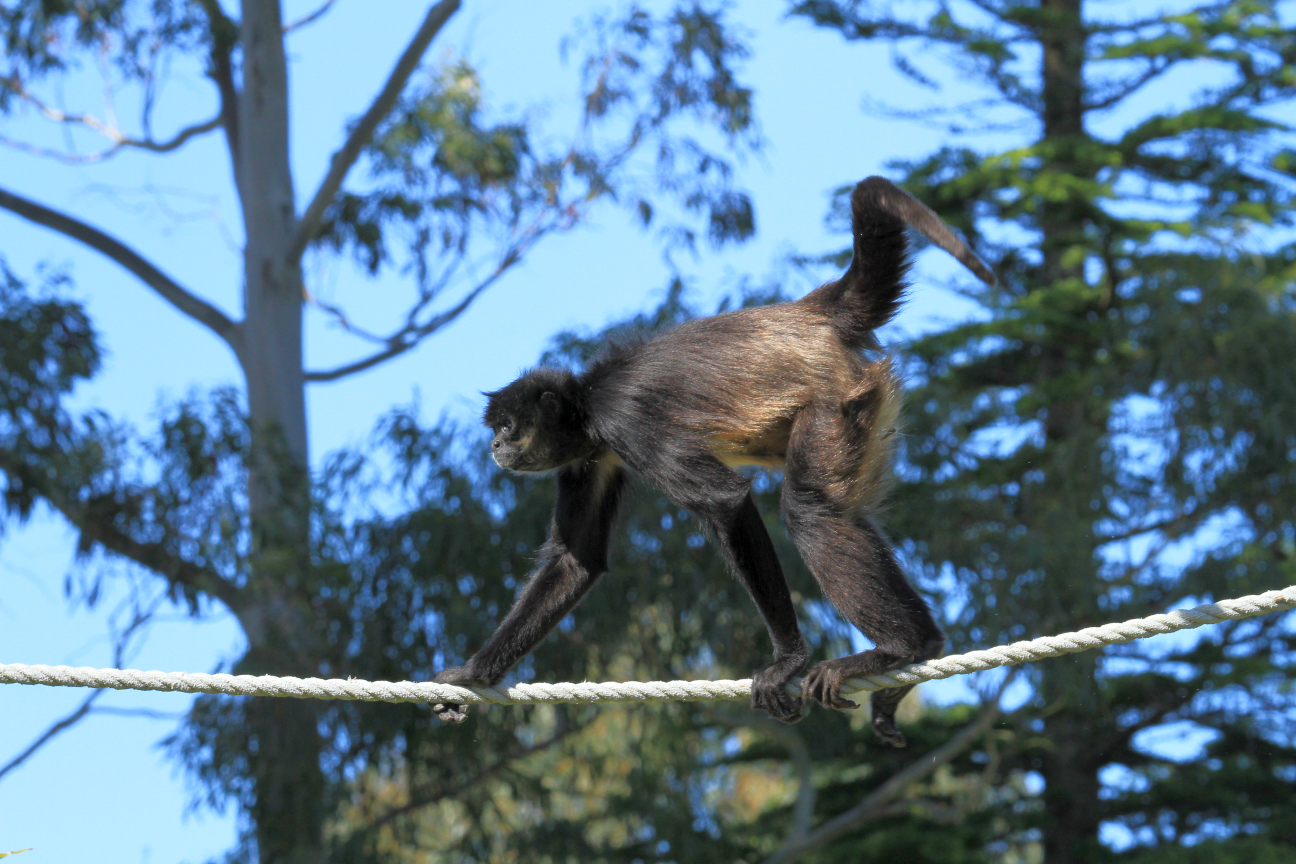
Exotic Species Manager, Rachael Mason says: “the monkeys are loving their renovated exhibit. We have added a range of naturalistic furniture to the island creating more dimensions for the animals. The monkeys have been making lots of vocalisations as they eagerly explore the setting. We are so excited that visitors can once again connect with these precious primates,” adds Rachael.
A key threat to spider monkeys is habitat loss as their rainforest homes in Central America are cleared for agriculture and logging. Orana Wildlife Park has been involved in the managed breeding programme for this endangered species since 1981.
“Moving the animals to the island enhances the chances of the monkeys producing babies, which is key for the breeding programme. The last monkey born at Orana was in 2005 and we are very keen to hear the pitter patter of small monkey feet again,” concludes Rachael.
Stuff | Newly-renovated spider monkey habitat hoped to spice up primates' love life
13 September 2022
We Have Doubled Our Devils!
Orana Wildlife Park is excited to introduce Pendlebury, Chester Campbell, Steele, Fox and John. The three-year old Tasmanian devils were transferred to Christchurch last week as part of the Save the Tasmanian Devil (STDP) Ambassador Programme.
The arrival of the five young males doubles Orana’s devil population to 9 and means Christchurch is home to one the largest holding of devils outside of Australia! Orana has New Zealand’s largest Tasmanian devil habitat.
Exotic Species Manager, Rachael Mason says: “We are thrilled to welcome the five new boys to Orana. Chester Campbell is the feistiest of the new arrivals and Fox doesn’t lag far behind in that regard. Steele and Pendlebury are rather mellow and John is the smallest and is quite calm and quiet but has beautiful long whiskers”.
“It is an absolute privilege for Orana to be involved in the Ambassador Programme and raise awareness on the plight of these magnificent marsupials,” adds Rachael.
Devils@Cradle’s Managing Director, Wade Anthony, accompanied the animals to Christchurch. “Pendlebury and Steele are brothers and Fox is their half-brother and all were born at our sanctuary in 2019. Chester Campbell and John are unrelated and moved to Devils@Cradle from the STDP programme for this transfer. These adult devils are in great condition. They have travelled well and I know they will settle in to a happy and healthy life here at Orana because Christchurch (the South Island) has a very similar climate and vegetation to Tasmania and Orana has a wonderful facility constructed specifically for devils.”
Tasmanian devils are the world’s largest surviving carnivorous marsupials. These nocturnal animals live for approximately 5-7 years in captivity. Sadly, devils are classified as endangered mainly due to a rare contagious cancer called Devil Facial Tumour Disease (DFTD). The fatal disease has led to a population decline of over 60% of wild devils and up to 90% in some regions of Tasmania. The main aim of the STDP is to ensure the survival of the species.
Orana Wildlife Park is proud to fulfil an important role as part of the Ambassador Programme to raise awareness of the issues facing devils and enthuse people about these amazing animals. Sadly, like some of New Zealand’s native wildlife, hundreds of devils are killed on Tasmania’s roads every year. Roadkill is a major threat to devils in diseased areas.
“Orana supports the Programme by generating funds for devils in the wild. We have contributed towards radio collars to monitor wild devils and for the installation of innovative devices that help prevent devils becoming roadkill. We engage with our visitors, encouraging them to drive carefully and slowly at night which can help to avoid wildlife becoming roadkill,” concludes Rachael.
Visitors will have the chance to meet the delightful new devils this week.
In the news:
Christchurch City Council | Newsline : Devils make new home at Orana Wildlife Park
11 July 2022
Otters Make A Splash
Our five boisterous otters (five males) made a splash in their newly upgraded pool this week. A new water filtration system has been installed after their large swimming pools pump failed resulting in poor water quality. Our otters love the water so we are pleased the new filtration system has been installed and that our otters can swim again.
As a registered charity, Orana generates over 80% of its income through visitation. Staff separately raise 100% of funds for all developments, such as these crucial exhibit repairs.
A huge thank you to Kiwi Gaming Foundation for their generous grant towards our otter filtration system.
11 July 2022
Spider Monkeys Set To Return
Thanks to our generous funders Kiwi Gaming Foundation, Mainland Foundation and Christchurch Casinos Charitable Community Trust we are excited work is now underway on our spider monkey moat.
Orana is home to five delightful spider monkeys (one male and four females). They have been housed off-display due to the moat around their island failing and no longer holding water (the butynol liner perished).
Shotcrete is being used to repair the moat. Shotcrete is a high strength concrete which is being sprayed on to line the moat. This is a permanent repair method and is provisioned to withstand earthquakes.
As a registered charity, Orana generates over 80% of its income through visitation. Staff separately raise 100% of funds for all developments, such as these crucial exhibit repairs.
We truly appreciate the support we have received from Kiwi Gaming Foundation, Mainland Foundation and Christchurch Casinos Charitable Community Trust to complete these repairs.
Orana staff mourn the loss of elderly rhino
This morning, Orana Wildlife Park’s veterinary and animal management team made the agonising decision to euthanaise Stumpy, a 40-year-old Southern White Rhinoceros, due to age related health issues.
Stumpy was transferred to Orana from Taronga Western Plains Zoo (NSW) in 1988 when he was five years old. He has been an iconic presence at Orana ever since and been at the Park longer than any staff member.
Park staff remember Stumpy as a real character and he was affectionately known as our marshmallow, being soft and sweet in nature. He loved to play with sticks and carried them around on his horn. He always enjoyed a good scratch and belly rub from his dedicated keepers. We know that thousands of our visitors enjoyed meeting Stumpy up close at the daily rhino presentation.
Stumpy was a fantastic ambassador for his wild cousins helping raise awareness on the plight of rhinos. In Africa, rhino poaching is out of control and the animals are illegally killed for their horn. Orana is a key player in a global effort to help save rhinos from extinction and this will result in more rhinos being transferred to Christchurch in the next year.
Stumpy will be sorely missed by our team who considered it an absolute privilege to work with such a beautiful and amazing animal.
Stuff.co.nz | 16 June 2022 | Zoo Staff Mourn Loss Of Stumpy The Elderly Rhino
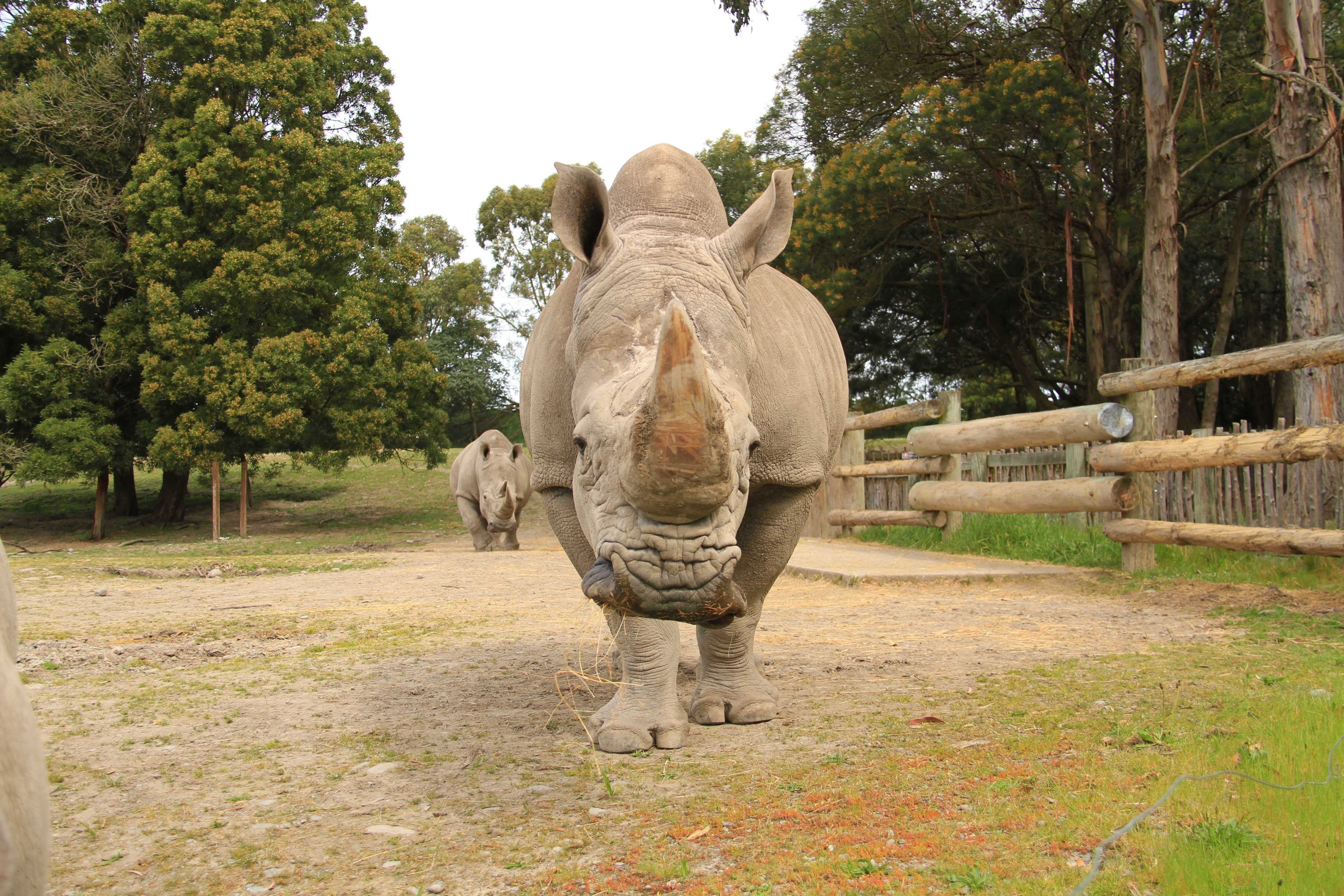
GIRAFFE CALF ON DISPLAY
Our beautiful giraffe calf Jasiri who was born at Orana in October 2021 to mum Shira is now on permanent display after recovering from a leg fracture.
He has been busy exploring his outdoor enclosure with his mum and aunts.
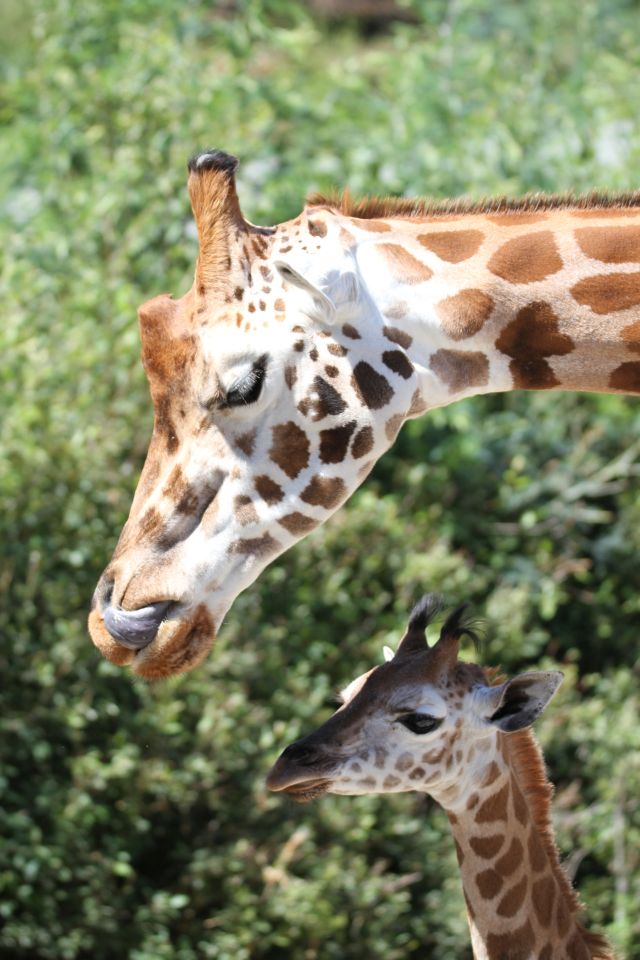
Festive themed fun day at the zoo
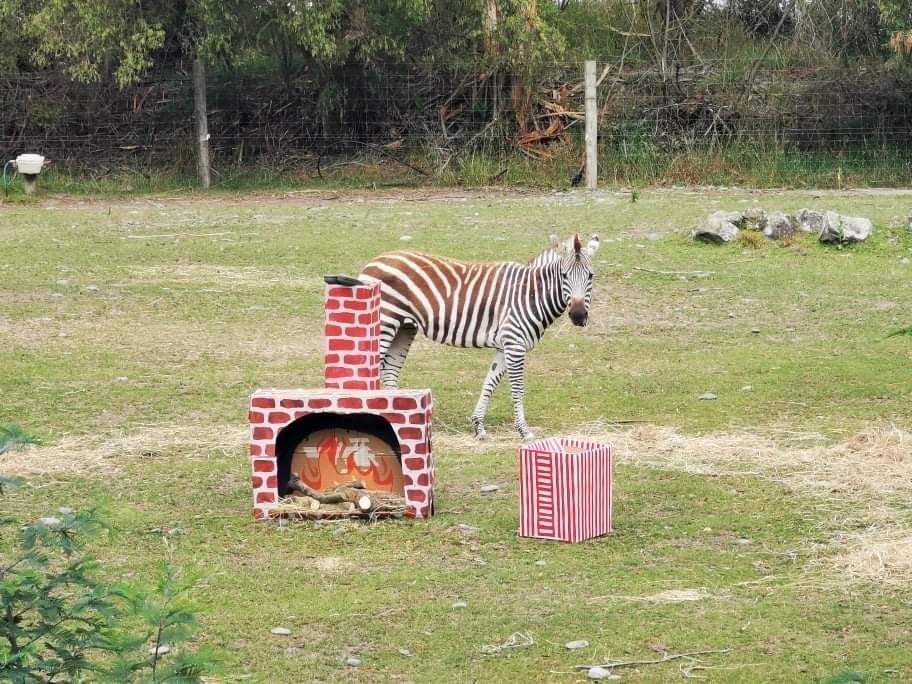
Orana Wildlife Park’s busy elves are preparing a cracker day to celebrate the festive season on Friday 24 December. The zoo’s good animals will each receive their Christmas present one day early to enable visitors to be part of the fun. This is the Park’s 11th annual staging of this popular event.
Head Elf, Maddy Hodge, says: “our team are very excited to share this special day with visitors and spread the Christmas spirt. We love this event, it has become a really popular day for staff, animals and visitors and is an especially exciting way to pass away the hours ahead of the big day!”
“We’ve spent weeks gift wrapping some amazing treats for the animals and cannot wait to see the variety of unwrapping techniques utilised! Monitors will munch tasty morsels, kea will artfully destroy their presents and lions will roar into their gifts. There will also be some special appearances including an appropriately placed sleigh and chimney. It will be an exciting day for all”.
“We wish everyone a very Merry Christmas”, concludes Maddy. Orana is closed on Christmas Day and is open every day from Boxing Day.
Orana Park treats the animals to Christmas gifts they can eat | Stuff.co.nz
World first hip replacement for orana's tasmanian devil
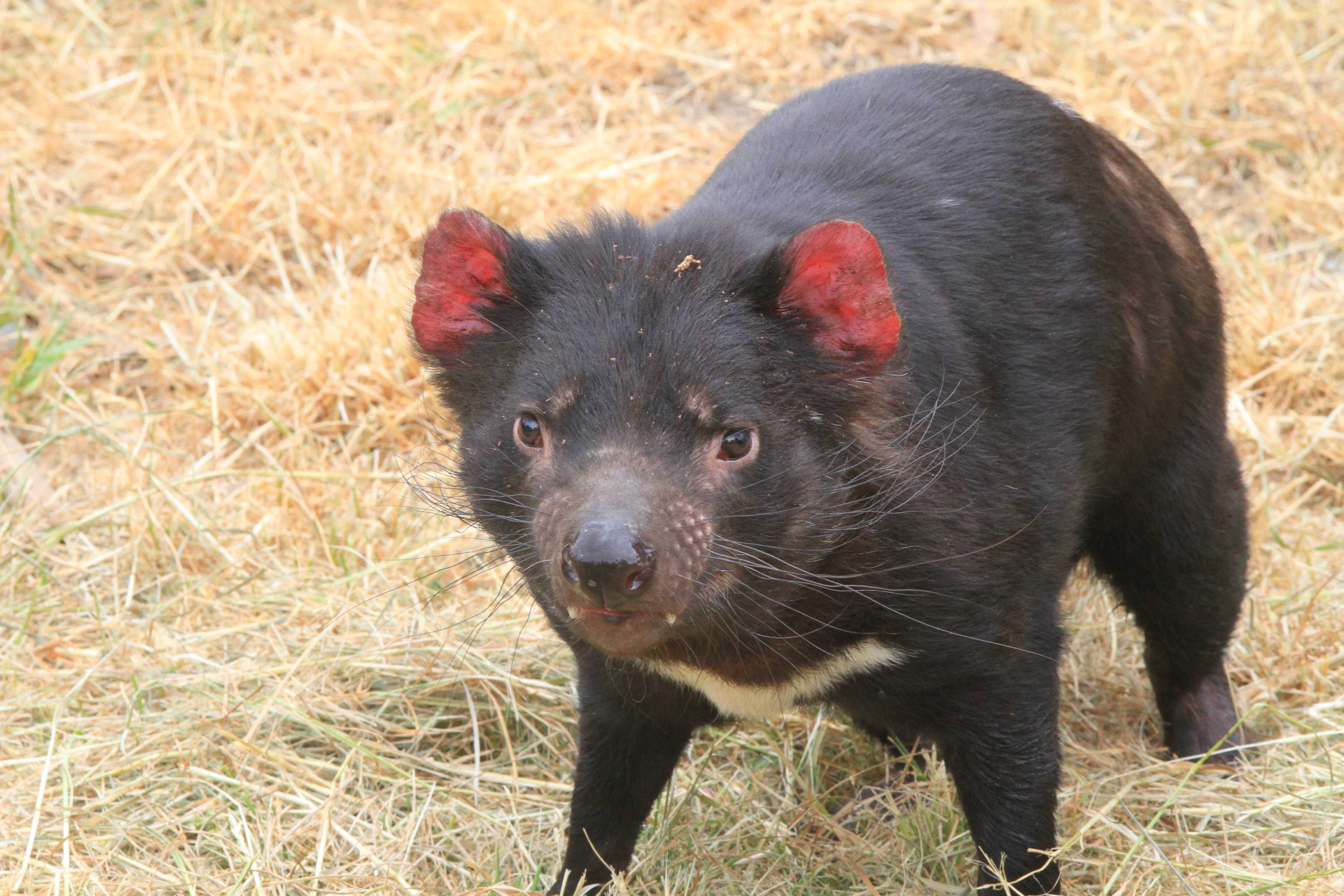
Talei, a 3-year-old Tasmanian devil, is the first of his kind to have had a full hip replacement! Dr Warrick Bruce, a specialist orthopaedic veterinary surgeon performed the ground breaking surgery at Rangiora Vet Centre, Orana’s vet.
Orana’s Exotic Species Manager, Rachael Mason, says: “Talei is a middle-aged devil and suffered from a deteriorating hip joint causing severe pain and lameness. Our animal care and veterinary team implemented an initial treatment plan to manage the pain. Subsequent x-rays revealed a grossly deformed hip joint which carried a poor long-term prognosis for Talei. Ongoing pain medication would not effectively manage his condition, thereby compromising his life expectancy.”
Orana’s Vet, Ben Davidson of Rangiora Vet Centre, adds: “The damage to his joint was severe where the outer layer of cartilage had eroded away meaning his joint was essentially bone rubbing on bone causing extreme discomfort. After consulting with our specialist surgeon, Dr Warrick Bruce, it was agreed that the best solution for Talei would be a full hip replacement, giving back a fully active and pain free life.”
“Dr Bruce is one of the few surgeons experienced in hip replacement surgery in animals in New Zealand. He was able to source the specialist instruments and implants required from the USA. The operation took place at Rangiora Vet Centre and progressed perfectly. Talei has experienced a smooth, text-book, recovery from the surgery. We are delighted that he has responded so well to his new joint”, says Ben.
“The operation has been a very positive change for Talei. He is no longer on pain relief and has full use of his hip. Talei is a shy animal and is most active at night. Since being transferred from our hospital room back into his exhibit, we have tracked his overnight movements with night vision cameras and know that he is investigating his habitat, climbing structures and is behaving like a perfectly healthy devil. This operation has dramatically enhanced his quality of life”, comments Rachael.
This surgery has significant implications for the management of endangered species. Talei has proven that this is a viable option and a fantastic alternative to long term pain relief or euthanasia. “Obviously not all animals with a sore hip require a hip replacement but there are cases where this is the best option. A specialist veterinary surgeon is trained to recognise the cases where this surgical treatment will provide a favourable outcome”, concludes Ben.
Talei was transferred to Orana Wildlife Park from Devils@Cradle in 2019 as part of the Save the Tasmanian Devil (STDP) Ambassador Programme for these endangered carnivorous marsupials. Orana first joined STDP in 2014. “It is a privilege for us to care for these amazing animals and raise awareness on the plight of devils”, says Rachael.
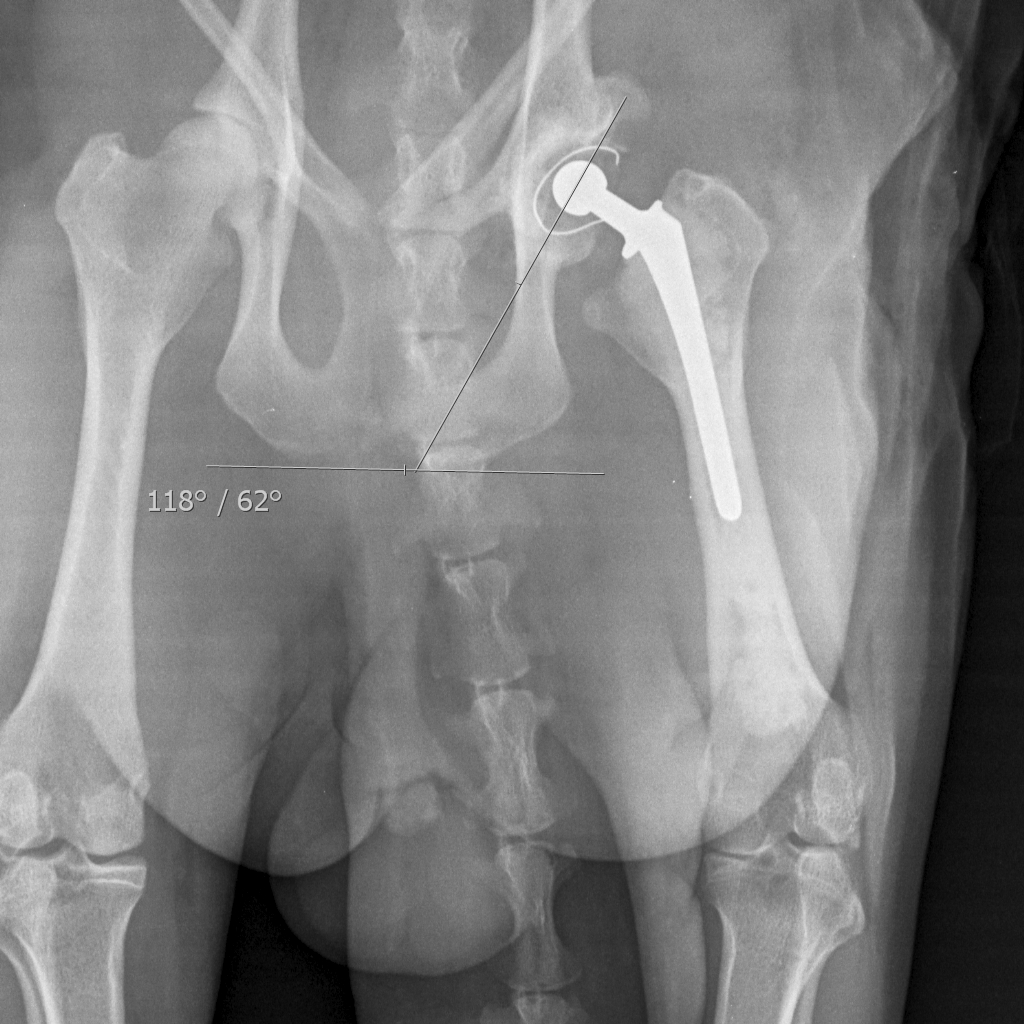
X-ray showing Talei's full hip replacement on ride side.
Tasmanian devils
Tasmanian devils are the world’s largest surviving carnivorous marsupials. These nocturnal animals live for approximately 5-7 years in captivity. Sadly, devils are classified as endangered mainly due a rare contagious cancer called Devil Facial Tumour Disease (DFTD). DFTD has led to dramatic declines of Tasmanian devils. While confidence is growing that DFTD will not drive widespread extinction of devils in the wild, the species remains endangered and the low population means the species is more susceptible to other threats. The Save the Tasmanian Devil Program aims to work with research partners to gain knowledge in science and determine emerging priorities to restore and maintain a resilient wild devil population that needs limited management intervention.
Orana fulfils an important role as part of the Ambassador Programme by raising public awareness of the issues facing devils. Orana also supports the Programme by generating funds for devils in the wild. We have contributed towards radio collars to monitor wild devils and for the installation of innovative devices that help prevent devils becoming roadkill.
otter-ly delightful addititons to orana
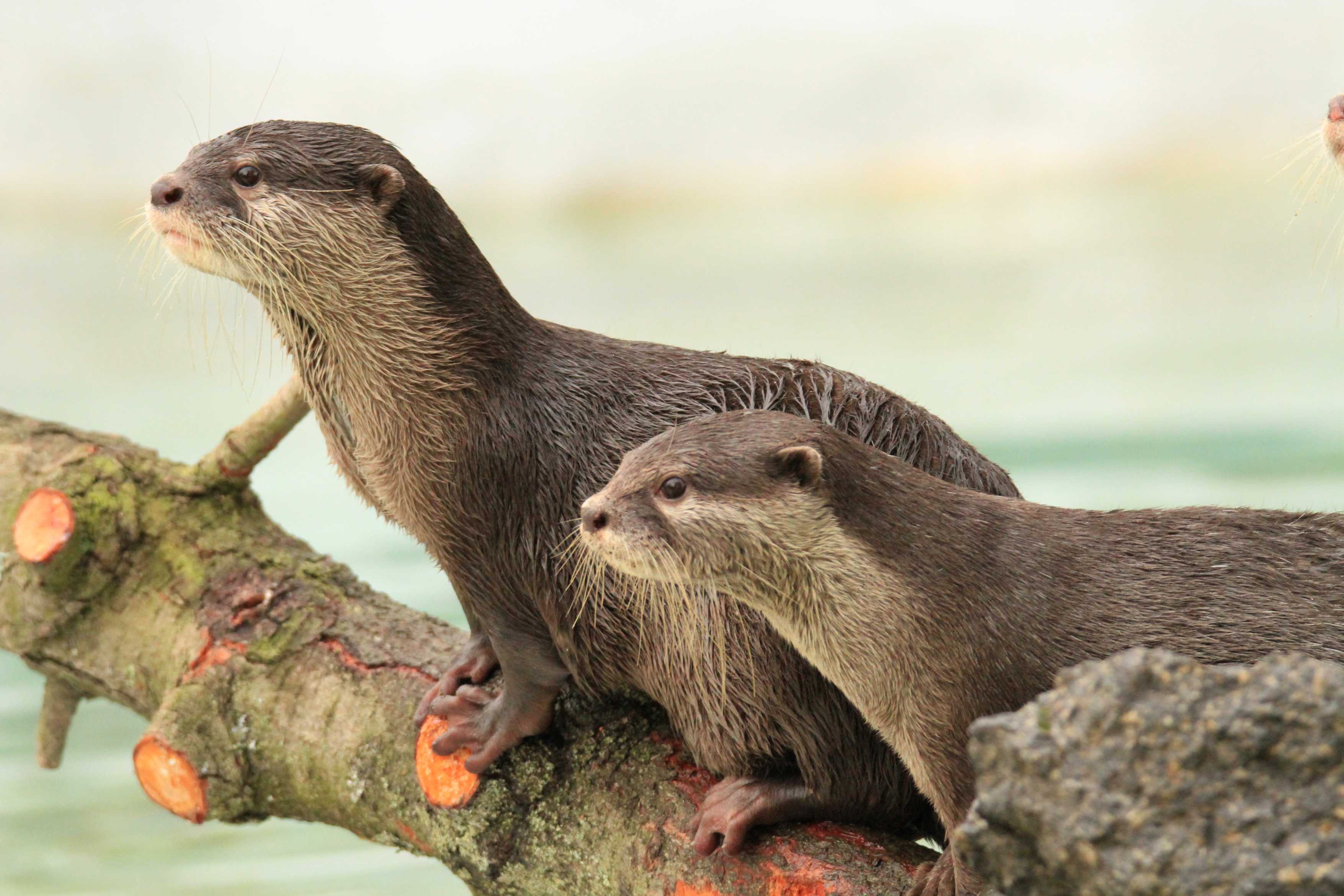
Five boisterous brothers are new to the zoo! Ikan, Bajak, Tiga (aged 3), Siak and Tuk (2) are Asian small-clawed otters and were transferred from Perth Zoo to Orana as part of the managed conservation breeding programme for these cheeky creatures. Tomorrow is their first full day on display to the public.
Lead Animal Keeper, Laura Ashton, says the new otters are delightful. “They are extremely busy boys, having the curiosity of a cat whilst being highly dextrous and nimble, able to manipulate objects in their hands. They become astounded by the smallest of things and love enrichment items. The boys sleep and nest together in the same space so we are greeted by a pile of otters in the morning! It will be so exciting to see them explore their new habitat.”
“Our team is delighted to welcome otters back to Orana. Our last animals sadly passed away in 2016 due to old age. Since that time, we have been liaising with our zoo partners to make this transfer a reality. Some major upgrades have been completed to the exhibit in preparation for the highly anticipated return of these amazing animals.”
Asian small-clawed otters are the smallest of all the otters. They are good indicators of the health of freshwater systems in which they live. If the water becomes polluted otters move to a cleaner source. Threats to the species include increasing pollution and habitat loss.
“Visitors will adore meeting the otters and it is great for our team to have another very positive addition to Orana”, concludes Laura.
Five otter brothers the newest stars at Christchurch's Orana Wildlife Park | Stuff.co.nz
Watch: Adorable otters move into Christchurch's Orana Wildlife Park | Newshub
Delightful New Male Monkey at Orana
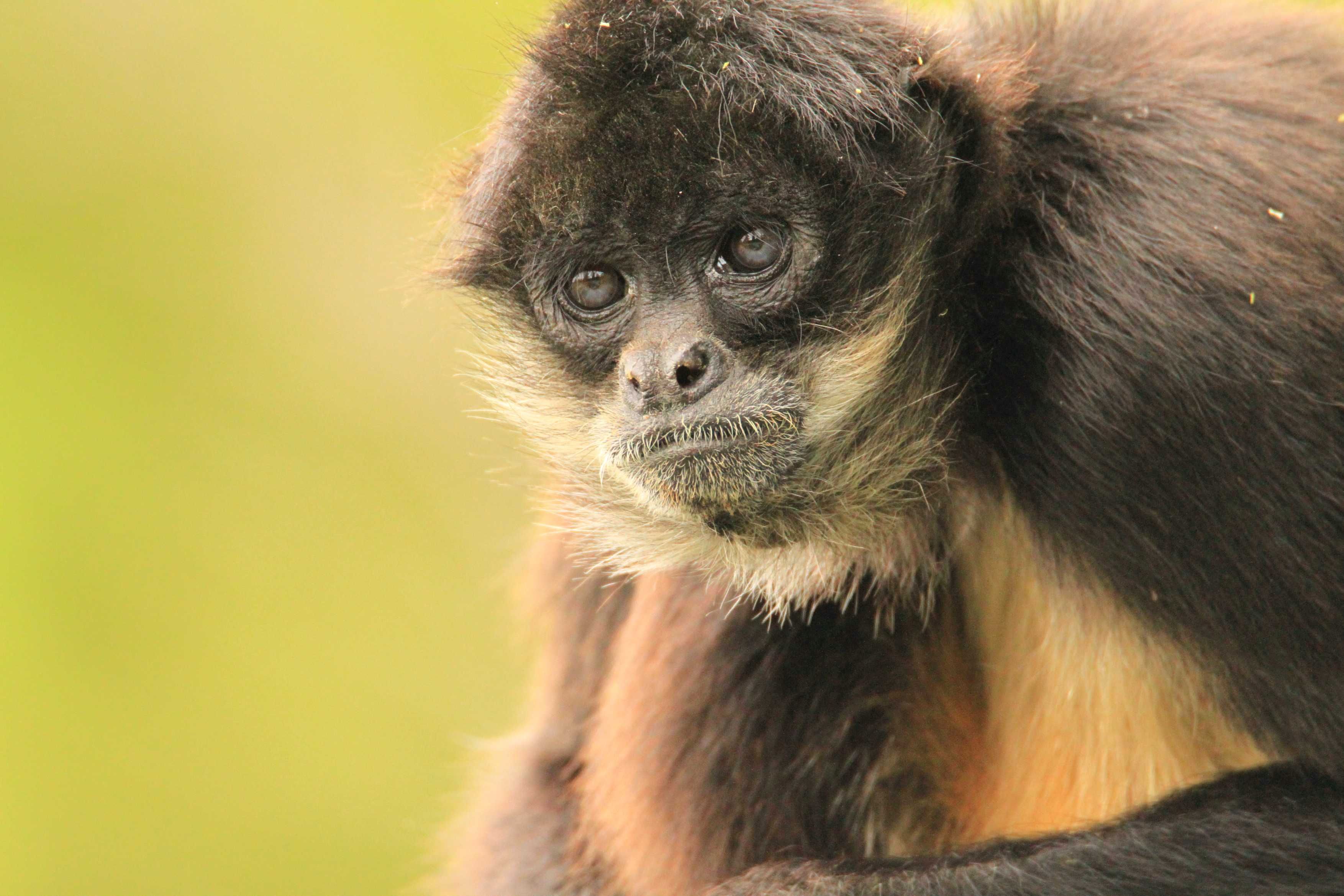
Introducing Orana Wildlife Park’s newest bachelor – Tostada, a 23 year old spider monkey. He’s 8kg of fur and muscle, dark and handsome (not so tall) and he’s already working his magic on his four new girls.
Tostada was transferred from Hamilton Zoo last week as part of the managed regional breeding programme for this endangered species. He’s settled in well to his new surroundings and has been fully introduced to Orana’s four female monkeys today. The females gave a very warm welcome to their new male, which led to a speedy full introduction.
Exotic Species Manager, Rachael Mason, says: “he is a lovely boy. He and the girls are really cute together – we’ve seen lots of grooming each other which is a great sign.”
Naturally, Park staff are hopeful of hearing the pitter patter of small monkey feet in the future - the last monkey born at Orana was in 2005.
Habitat loss is one of main reasons spider monkeys are endangered.
Pretty Kamili making friends at Orana
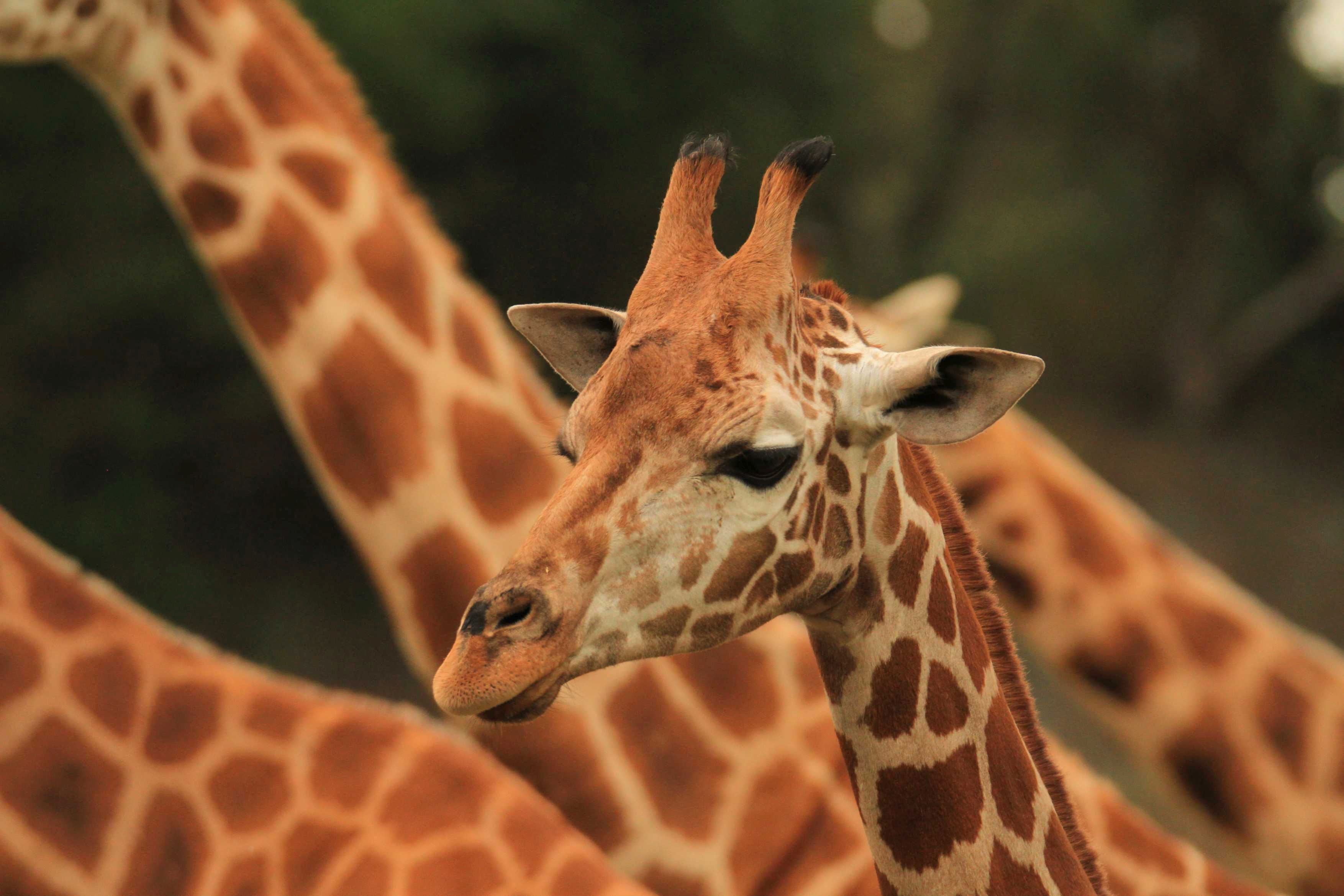
Kamili, a beautiful 20-month old female giraffe, arrived at Orana Wildlife Park last night. She was transferred from Perth Zoo, travelling almost 6,000km to Christchurch. She crossed the Nullarbor desert from Perth to Melbourne before embarking on a 7-day sea voyage to Lyttelton.
This morning, Kamili completed MPI checks and has now being fully introduced to Orana’s herd of three females and our young (unrelated) male named Mabuti. She will be in quarantine for the next three days but fully visible to Park visitors.
Orana’s Manager of Exotic Species, Rachael Mason says: “we are delighted to welcome Kamili to Orana – she is a very pretty giraffe and a confident young lady. We are thrilled with how well she has settled in. The planned introduction to our four giraffes went brilliantly and I’m delighted we now have a herd five of these majestic gentle giants.”
Kamili has ancestral ties to Orana Wildlife Park as her father, Armani, was born here in 2002! Perth Zoo Senior Keeper, Kaelene McKay, travelled with Kamili to Christchurch. “Kamili has now completed the reverse trip to the journey her father undertook many years ago; she has returned to family.”
“I’m delighted how well she has handled the move. This transfer is a great example of how zoos work collaboratively together. This morning, Kamili marched straight out of the crate and is now making friends with her new herd – it’s like she’s been here forever!”
Kamili was transferred to Orana as part of the managed regional breeding programme for this increasingly threatened species. Giraffe populations continue to decline due to habitat loss and poaching.
“Obviously Kamili is too young to breed at this point, and our bull Mabuti is only a young man. This transfer was completed with the aim that in time Kamili will contribute to the preservation of her species. The last giraffe born at Orana was in 2012 - Harriet, who still lives here and is in fact Kamili’s auntie” concludes Rachael.
DAINTY NYALA NEW TO ZOO
Distinguished by a short fluffy tail, beautiful orange coats with white stripes, Orana Wildlife Park’s newest arrivals – five young nyala (2 males and 3 females aged 1-4 years) – are capturing the attention of the team.
This is the first time Orana has ever held nyala, a spiral-horned antelope! The animals were transferred from Wellington Zoo last week and will venture on display for the first time in Christchurch today.
Lead Ungulate Keeper, Stewart Taylor, says: “It is fantastic to join another breeding programme for an antelope species. The nyala travelled well and have settled in nicely here. The girls are very friendly and inquisitively approach keepers whereas the boys are more reserved”.
Though nyala are known as a spiral-horned antelope, only males have horns. Their horns can grow over 80cm in length and have a yellow tip. “Our boys are young but we will watch their development with interest”.
“It’s a privilege for us to join the regional breeding programme for these stunning animals. Orana plays a key role in maintaining genetically healthy sustainable programmes especially for hoofstock species being New Zealand’s only open range zoo.”
The main threats to nyala are poaching and habitat loss. They number less than 30,000 in the wild and the majority of the population is protected in national parks in sanctuaries in Southern Africa.
“I am sure visitors will enjoy meeting these amazing animals and we hope in time they will produce lots of youngsters” concludes Stewart.
Dainty nyala move to Christchurch's Orana Wildlife Park | Stuff.co.nz
ZOOLIFE
Take Part in live animal experiences at Orana - streaming daily on Zoolife. Join live Q&As hosted by nature experts as you explore dozens of animals up-close... from home! Try it for FREE at zoolife.tv/orana.
All Zoo Wants for Christmas, is new Tigers!
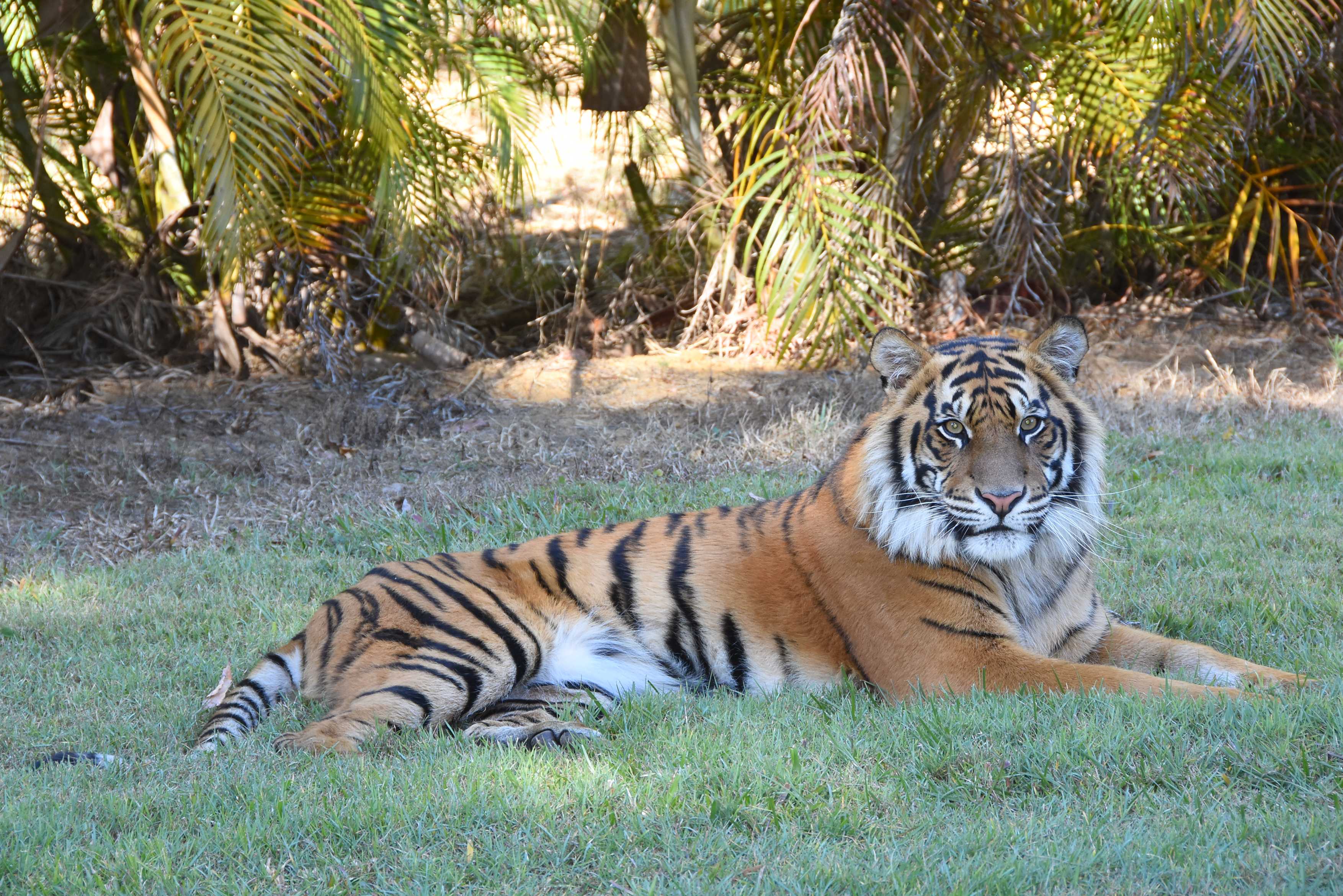
Orana Wildlife Park has new additions to the Park – two stunning Sumatran tigers! Reggie and Scout are the only tigers in the South Island.
The 4-year-old big cats were transferred from Australia Zoo, arriving in Christchurch mid December. They have completed quarantine and made their visit public apperance just before Christmas Day!
Orana’s Exotic Species Manager, Rachael Mason, says her team is very excited to work with the new arrivals: “Scout and Reggie are beautiful animals. They are very chatty cats, greeting their keepers with a friendly, distinctive tiger chuff. We’ve also seen them cuddling together and grooming each other, positive signs that they are relaxed. They have settled in well and now it is time to let them explore their new outdoor surroundings.”
“Our team is delighted to welcome tigers back to Orana. Our last elderly tiger (Dumai) sadly passed away in February, so we have been eagerly awaiting the arrival of these two boisterous young boys. We have completed a range of upgrades to our tiger habitat, opened in 2006, including erecting new platforms, climbing structures and updating the water features for the benefit of the cats.”
Orana is privileged to be an active partner in the Zoo Aquarium Association Australasia’s breeding programme for this critically endangered species. Sumatran tigers number less than 500 in the wild. They are threatened due to habitat loss as a result of expansion of oil palm plantations, illegal trade and loss of prey.
“Reggie and Scout will be amazing ambassadors for their wild cousins. They will help Orana raise funds for Wild Cats Conservation Alliance, directly contributing to wild tiger conservation, whilst also highlighting the plight of wild tigers and how visitors can help address palm oil deforestation to conserve these magnificent big cats.”
“It is wonderful to have a very positive end to such a tricky year. This is a perfect early Christmas present for our team and I am sure visitors will adore meeting and learning about these magnificent cats” concludes Rachael.
Christchurch locals welcome two rare tigers from Australia to Orana Wildlife Park | 1 NEWS | TVNZ
Two rare Sumatran tigers join Orana Wildlife Park | Newshub
Orana Wildlife Park set to unveil two new Sumatran tigers | Stuff.co.nz
Zoo Excited About Lacey Additions
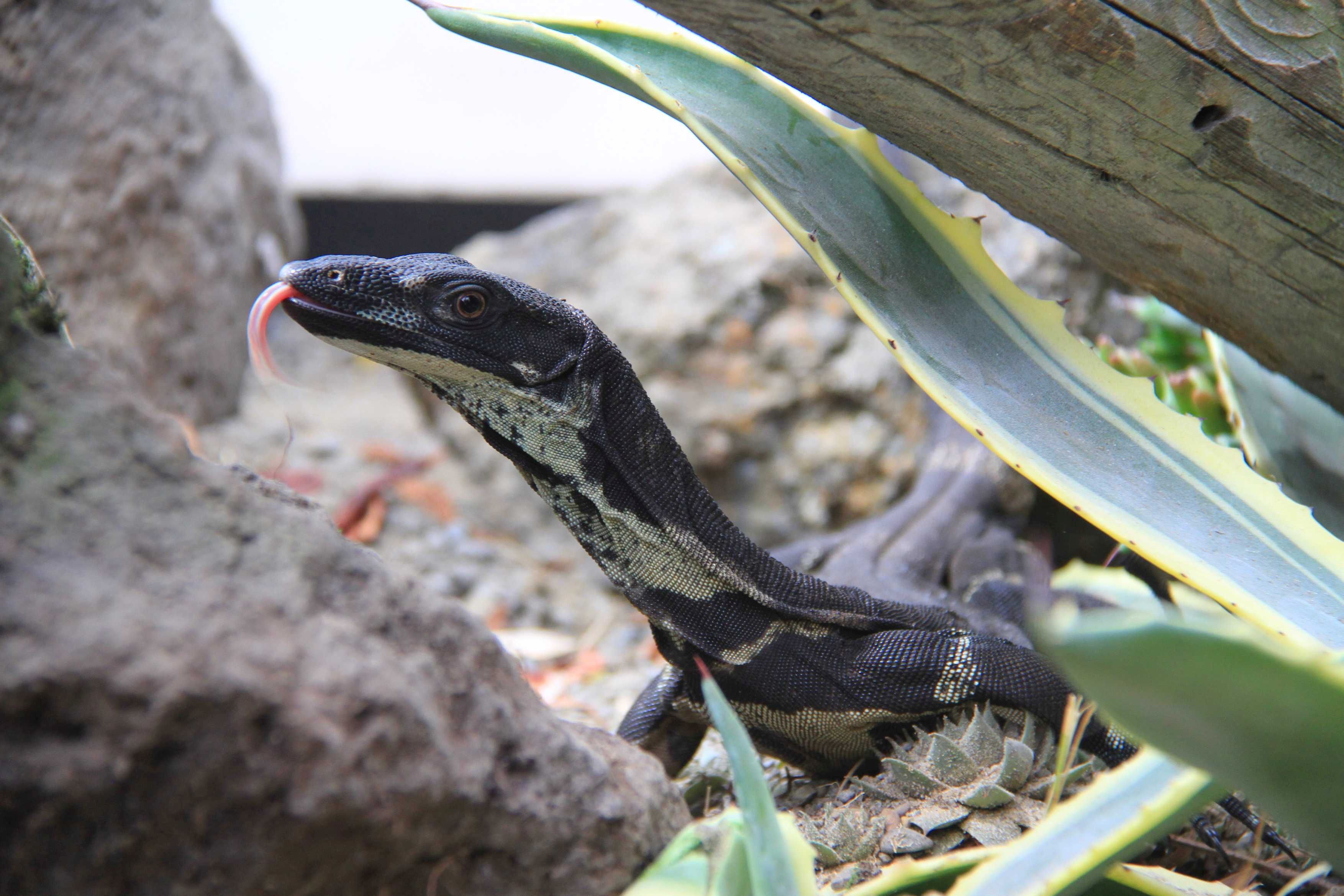
They hatch in a termite mound, have long forked tongues, a nasty bite and they’re Australian … introducing Orana Wildlife Park’s latest arrivals – two, ten-month-old, Lace Monitors (aka goannas). The delightful lizards, which are yet to be sexed, were transferred yesterday from Auckland Zoo where they hatched.
Lace Monitors are amazing animals that are related to Komodo dragons. We are privileged to have the opportunity to work with them. These juveniles will eventually grow to two metres long!
Lace Monitors possess strong claws for digging and climbing. They are highly intelligent animals, evidenced by their relationship with termites. The female digs a hole in a termite mound to lay her eggs, leaving the termites to close up the hole. The young hatch after 8 to 9 months and the female will return to dig them out!
The monitors are carnivorous and will eat anything that fits in their mouth including birds, small mammals and carrion, and they actively forage for birds’ eggs. They are very food motivated and extremely active, making them a fantastic addition to our Reptile House. Visitors will have the opportunity to learn first-hand about the unique traits of these stunning animals compared to our unique and cryptic native reptiles.

